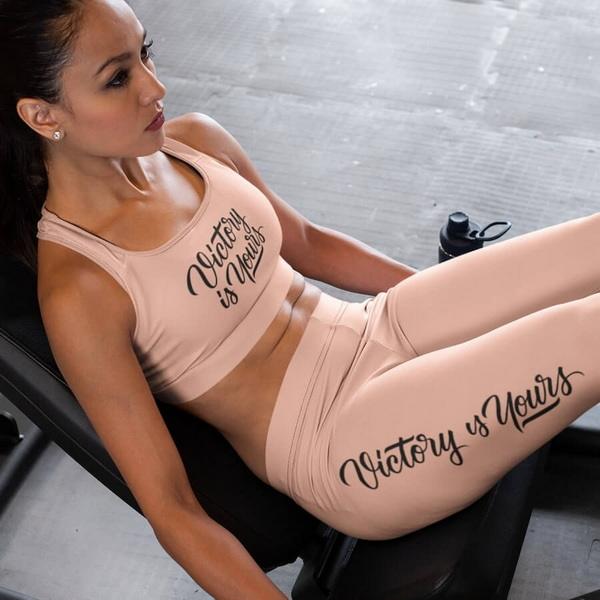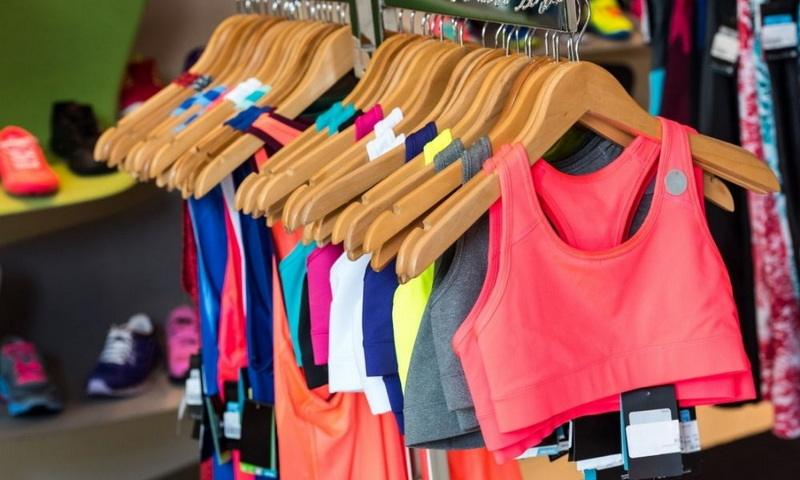Content Menu
● Understanding Yoga Clothes: Technical Features and Market Insights
>> Key Technical Features of Yoga Clothes
>> Market Growth and Consumer Demand
● Athleisure: The Versatile Powerhouse of Activewear
>> Technical and Product Development Aspects of Athleisure
>> Market Size and Growth Projections
● Comparing Yoga Clothes and Athleisure: What Should Your Brand Choose?
● Supply Chain and Product Development Insights
● Strategic Considerations for Brand Positioning
● FAQ
>> 1. What fabric features are essential in yoga clothes?
>> 2. How does athleisure differ from yoga clothes in terms of market appeal?
>> 3. What are the key supply chain challenges in producing yoga clothes?
>> 4. How is sustainability influencing athleisure and yoga wear?
>> 5. Can a brand successfully combine yoga clothes and athleisure in its product line?
In the evolving landscape of activewear, brands face a pivotal choice: should they focus on yoga clothes or broaden their scope to include athleisure? Both categories offer lucrative opportunities but cater to distinct consumer needs and market dynamics. This comprehensive article explores the technical, supply chain, and product development aspects of yoga clothes and athleisure, helping brands identify the best fit for their portfolio and growth strategy.

Understanding Yoga Clothes: Technical Features and Market Insights
Yoga clothes are specialized activewear designed to support the unique physical demands of yoga practice. Unlike general fitness apparel, yoga wear prioritizes flexibility, comfort, and durability to accommodate poses ranging from deep lunges to backbends.
Key Technical Features of Yoga Clothes
– 4-Way Stretch Fabric: Yoga clothes utilize materials like spandex, Lycra, and elastane blends that stretch in all directions, allowing unrestricted movement without sagging or losing shape.
– Moisture-Wicking Technology: Advanced fabrics actively pull sweat away from the skin, keeping practitioners dry and comfortable, which is essential during intense or hot yoga sessions.
– Breathability: Lightweight, breathable fabrics such as polyester-spandex blends and mesh panels enhance airflow, preventing overheating and discomfort.
– Shape Retention and Durability: High-quality yoga wear maintains its form and elasticity over time, even after repeated washes, ensuring long-term value for consumers.
– Seamless and Anti-Odor Features: Seamless construction minimizes irritation, while antimicrobial treatments reduce bacteria buildup, keeping garments fresh.
Market Growth and Consumer Demand
The yoga clothing market is poised for rapid growth, projected to reach USD 53.72 billion by 2032, driven by the global rise in yoga practice and wellness programs. Women dominate this segment, accounting for 77% of market revenue, with bottom wear (leggings and pants) leading product sales. Consumers increasingly demand high-performance, eco-friendly, and stylish yoga clothes that transition seamlessly from studio to street.
Athleisure: The Versatile Powerhouse of Activewear
Athleisure blends athletic functionality with casual style, appealing to consumers who want comfortable yet fashionable clothing for both workouts and everyday wear. This category has expanded beyond gym wear to become a dominant fashion trend.
Technical and Product Development Aspects of Athleisure
– Performance Fabrics: Like yoga clothes, athleisure incorporates moisture-wicking, stretchable, and breathable fabrics, but with a broader focus on versatility for various activities beyond yoga.
– Sustainability and Innovation: The athleisure market is rapidly adopting eco-friendly materials and tech-enhanced functionalities such as temperature regulation and smart textiles.
– Fashion-Forward Design: Athleisure emphasizes style, leveraging collaborations with fashion designers and influencers to create appealing, trend-conscious products.
– Mass Market Accessibility: Mass athleisure brands offer affordable price points, making the category accessible to a wide consumer base, which drives significant market share.
Market Size and Growth Projections
The global athleisure market was valued at approximately USD 425 billion in 2025 and is expected to nearly double by 2034, growing at a CAGR of 9.2%. The premium segment, offering luxury and high-quality products, is growing even faster at 10.5% CAGR, fueled by consumer demand for durability and exclusivity.

Comparing Yoga Clothes and Athleisure: What Should Your Brand Choose?
| Aspect | Yoga Clothes | Athleisure |
| Primary Function | Support for yoga practice with specialized features | Versatile wear for athletic and casual use |
| Fabric Technology | 4-way stretch, moisture-wicking, seamless design | Moisture-wicking, breathable, eco-friendly tech |
| Target Consumer | Yoga practitioners, wellness-focused individuals | Broader audience seeking comfort and style |
| Market Growth | Fast-growing niche with wellness trend focus | Large, expanding market with mass and premium tiers |
| Price Point | Mid to high, focused on performance and durability | Wide range from affordable to luxury |
| Design Focus | Functionality with style, studio-to-street wear | Fashion-forward, trend-driven, influencer-led |
| Supply Chain Complexity | Requires specialized materials and knitting tech (e.g., seamless circular knitting) | Diverse sourcing, including sustainable and tech fabrics |
Supply Chain and Product Development Insights
Yoga Clothes Manufacturing
Manufacturing yoga clothes demands precision and advanced technology. Seamless yoga garments, for example, are produced using circular knitting machines that create continuous tubular fabric, reducing seams and enhancing comfort. High-quality yarns and strict fabric inspections ensure durability and performance. Dyeing and finishing processes use premium dyes for vibrant, long-lasting colors.
Athleisure Production
Athleisure production often involves a broader range of materials and styles, requiring flexible supply chains that can scale across casual and performance wear. Sustainability is a growing priority, with brands sourcing recycled fibers and implementing eco-friendly dyeing techniques. Collaboration with fashion designers and influencers influences rapid product development cycles and trend responsiveness.
Strategic Considerations for Brand Positioning
When deciding between yoga clothes and athleisure, brands should evaluate:
– Consumer Base: Are you targeting dedicated yoga practitioners or a broader lifestyle audience?
– Product Expertise: Does your team have technical knowledge in specialized fabrics and garment construction for yoga, or is your strength in versatile, fashion-oriented activewear?
– Supply Chain Capability: Can you manage the complexities of seamless knitting and high-performance fabrics, or do you prefer scalable, diverse sourcing for mass-market appeal?
– Brand Identity: Does your brand align more with wellness and mindfulness or with casual, everyday comfort and style?
– Growth Potential: While athleisure offers a larger market, yoga clothes present a rapidly expanding niche with loyal customers.
Conclusion
Both yoga clothes and athleisure present compelling opportunities for activewear brands, but the best fit depends on your brand’s vision, technical capabilities, and target market. Yoga clothes require specialized fabric technologies and manufacturing expertise to deliver the flexibility, moisture management, and durability that yogis demand. Athleisure offers broader market access with a focus on versatility, fashion, and sustainability.
By leveraging supply chain insights and product development innovations, brands can successfully position themselves in either segment or strategically blend both to capture diverse consumer needs. Whether you choose to specialize in high-performance yoga wear or embrace the dynamic athleisure trend, understanding the technical and market nuances will empower your brand to thrive.
Ready to elevate your activewear brand with expert product development and supply chain solutions? Contact us today to explore tailored strategies that align with your vision and market goals.

FAQ
1. What fabric features are essential in yoga clothes?
Yoga clothes should have 4-way stretch for flexibility, moisture-wicking to keep dry, breathability for comfort, shape retention for durability, and seamless construction to minimize irritation.
2. How does athleisure differ from yoga clothes in terms of market appeal?
Athleisure targets a broader audience seeking versatile, stylish clothing for both workouts and casual wear, while yoga clothes focus specifically on the needs of yoga practitioners with specialized technical features.
3. What are the key supply chain challenges in producing yoga clothes?
Producing yoga clothes involves sourcing high-quality stretch fabrics, utilizing advanced knitting technologies like seamless circular knitting, and ensuring strict quality control during dyeing and finishing processes.
4. How is sustainability influencing athleisure and yoga wear?
Both categories are increasingly adopting eco-friendly materials such as recycled polyester and organic cotton, along with sustainable manufacturing practices to meet consumer demand for responsible products.
5. Can a brand successfully combine yoga clothes and athleisure in its product line?
Yes, many brands blend yoga-specific features with athleisure style to create versatile collections that appeal to both dedicated yogis and lifestyle consumers, leveraging technology and design innovation to meet diverse needs.
Hot Tags:
Yoga Clothes, Athleisure Wear, Yoga Vs Athleisure, Branded Activewear, Fashionable Yoga Apparel, Custom Yoga Clothing, Athleisure Market Trends, Yoga Apparel Branding, Stylish Workout Clothes, Activewear for Brands
